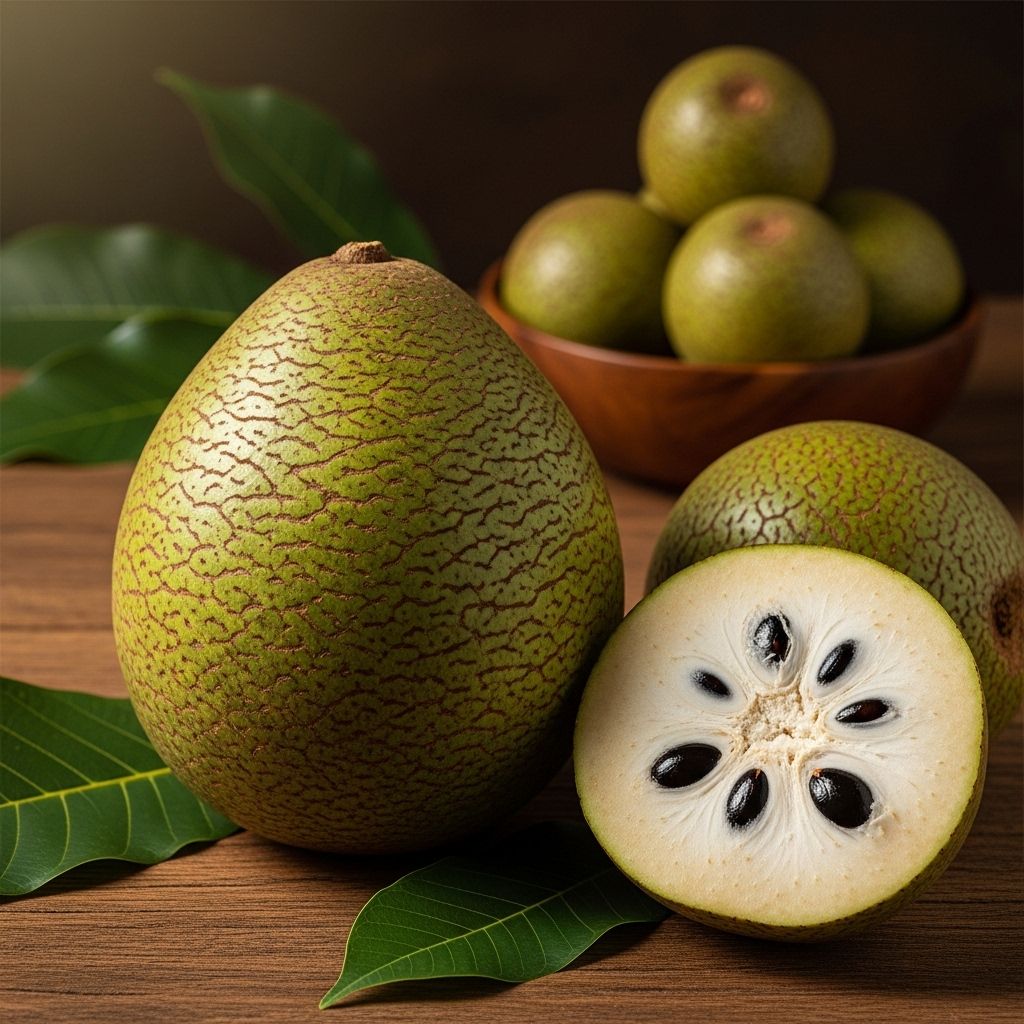Exploring Elephant Apple: Benefits, Uses, and Taste
Discover the Nutritional and Medicinal Value of Elephant Apple

Table of Contents
- Introduction
- Description of Elephant Apple
- Health Benefits and Nutritional Value
- Culinary and Medicinal Uses
- Frequently Asked Questions
Introduction
Elephant apple, known scientifically as Dillenia indica, is a large, evergreen tree native to tropical Asia. It belongs to the Dilleniaceae family and is widely recognized for its unique fruit. The name “elephant apple” comes from the fact that its large, hard fruits are primarily accessible to megaherbivores like elephants, which are important seed dispersers for the tree.
Description of Elephant Apple
Dillenia indica is characterized by its large, round, greenish-yellow fruits. These fruits are composed of 15-20 carpels, each containing edible but fibrous and glutinous pulp along with several seeds. The tree itself can grow up to 30 meters tall, with corrugated leaves and large, white or creamy yellow flowers.
Its fruits are rounded with a few lumps, resembling an elephant’s toe, which adds to its distinctive name. The flowers are highly fragrant and attract bees and other insects for pollination.
Ecological Role
Elephant apple plays a significant ecological role, particularly in seed dispersal. Asian elephants not only consume the fruits but also help spread the seeds, ensuring the tree’s propagation. However, as a backup mechanism, the fruits soften over time, allowing smaller animals like macaques and rodents to access them.
Health Benefits and Nutritional Value
Elephant apple is rich in nutrients, including high levels of vitamin C, carbohydrates, fats, fiber, protein, minerals, and fatty acids. Its high water content and fiber make it beneficial for digestive health.
| Component | Percentage (Per 100 g Edible Flesh) |
|---|---|
| Moisture | 82.3% |
| Protein | 0.8% |
| Fat | 0.2% |
| Minerals | 0.8% |
| Fiber | 2.5% |
| Carbohydrates | 13.4% |
| Calories | 59 kcal |
| Calcium | 0.016% |
| Phosphorus | 0.026% |
Elephant apple is also known for its medicinal properties, including antimicrobial, analgesic, and anti-inflammatory effects. It is traditionally used in treating various ailments such as dysentery and diabetes.
Culinary and Medicinal Uses
The fruit and juice of Dillenia indica are used in culinary dishes and medicinally. In traditional medicine, the leaves and bark are utilized for their health-benefiting compounds.
- Culinary Uses: Elephant apples are used in making curries and chutneys, adding a sour flavor to dishes.
- Medicinal Uses: The fruit and its extracts are used to treat several health conditions, including diabetes and digestive issues.
Taste and Texture
The taste of the elephant apple is acidic and sour due to its high content of thick, fleshy sepals. The pulp inside is also sour but edible, making it a unique ingredient in various recipes.
Frequently Asked Questions (FAQs)
Q: What is an Elephant Apple?
A: Elephant apple, or Dillenia indica, is a large, evergreen tree producing fruits that are primarily consumed by elephants and other large animals.
Q: What are the main health benefits of Elephant Apple?
A: Elephant apple is rich in fiber, vitamins, and minerals, offering benefits such as digestive health and potential anti-diabetic properties.
Q: How is Elephant Apple used in cooking?
A: It is commonly used in curries and chutneys due to its sour taste, adding flavor to dishes.
Q: Are Elephant Apples easy to grow?
A: While they thrive in tropical environments, growing them requires specific conditions and care, similar to other tropical tree species.
References
- https://www.growables.org/information/TropicalFruit/ElephantApple.htm
- https://www.thepharmajournal.com/archives/2022/vol11issue6S/PartO/S-11-6-132-832.pdf
- https://en.wikipedia.org/wiki/Dillenia_indica
- https://pmc.ncbi.nlm.nih.gov/articles/PMC10453057/
- https://www.nparks.gov.sg/florafaunaweb/flora/2/8/2842
- https://www.cabidigitallibrary.org/doi/full/10.1079/cabicompendium.18975
Read full bio of Sneha Tete












